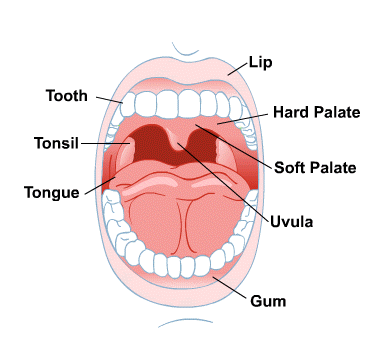Your child is growing up before your very eyes! She is talking up a storm and you’re basking in her chatter (maybe whilst sipping on your favorite beverage.) Or, maybe she’s not quite the chatterbox she used to be because she notices that people can’t understand everything she says. As a parent, that feels like a dagger to the heart – witnessing your child’s sparkle fizzle out.
Let’s get her back on her happy path, or keep her on her happy path if she’s still there!
For starters, let’s make sure that we are on the same page here in terms of what typical development looks like. If your child is younger than 4 years old and cannot say the “l” sound properly, then she is considered typically developing.
That being said, this is not a hard-and-fast-rule, as an SLP might address the “l” sound with a child younger than 4 if (a) her pronunciation has a negative impact on her intelligibility (b) she is self-conscious about her pronunciation (c) she is stimulable for producing the “l’ sound, or (d) other subjective reasons not listed above.
What Can Your Child Do?
As a therapist, I oftentimes hear of what a child CANNOT do. While it is an important part of why a client comes to me, I always want to know what the child CAN do, and what she IS doing.
Your child can’t say the “l” sound. We’ve established that. Or, have we?
Does she say “w” for “l”? For instance, “wion” for lion.
Does she say /j/ (pronounced “y”) for “l”? For example, “yeyow” for yellow?
Does she make a different substitution? Or, does she drop the sound altogether?
Can she say “l” during some instances, but not others? Perhaps she can say it in the beginning and middle of words (“List” and “balloon”), but not at the end (“ba” for ball).
You might have already picked up on the nuances of your child’s pronunciation, or perhaps you haven’t. Either way is totally fine! Just some food for thought so you can think about where your child’s “l” journey began.
Let’s Water the Sponge!
Even if a child can say the “l” sound in some instances but not others, my approach is to always pour the foundation first. We need to be on the same page about how the “l” sound is produced before we can build momentum and transfer that skill over to the word, sentence, or conversational levels. As such, that’s exactly what these tips will teach you: how to teach a child to say the “l” sound.
Before we delve in, I wanted to note that the great thing about the “l” sound is that it is a multimodal sound. In other words, we can use multiple senses to teach this sound, which is appealing to learners of various styles. It is simultaneously a visual, auditory, and tactile sound.

Note the placement of the tongue when you produce the “l” sound. It should be behind your front teeth and anchored there, to a spot called your alveolar ridge, which is the initial flat surface you can feel on your hard palate when you slide your tongue along the roof of your mouth.
Here are some of my favorite tips and tricks for teaching children to say the “l” sound:
Visual:
- Over-exaggerate the pronunciation of the “l” sound. When you say it, open up your mouth really wide so that your child can see the placement of your tongue (see above) when you produce “l”.
- Use a mirror (or the “selfie-mode” on your phone’s camera!) Place your child in front of a mirror and take turns saying “l”. Can she spot the difference between how you say it and how she says it? Note: I’ve noticed that kids are usually ecstatic to use phones during therapy!
- Show a picture. I typically hand-draw images – super amazing ones, of course, haha – to demonstrate to the child where her tongue needs to go. Can’t draw? You can show her the image above for starters or just do a quick Google Image search for “l sound”.
Tactile
- Put a little peanut butter on the alveolar ridge. Dab a little peanut butter – or maybe honey if she’s allergic to PB – right behind her front teeth, where her tongue should go. Ask her to lick it off. This will get her used to the proper tongue placement if she is having a hard time stretching her tongue up that high.
- Rub a lollipop on the alveolar ridge. Demonstrate correct tongue placement by rubbing a lollipop on the alveolar ridge. Ask her to stretch her tongue up to that spot.
- Put applesauce on the alveolar ridge. Have her try to lick off the applesauce while talking. Make sure that she has airflow coming out of her mouth and is using her voice nice and loud to produce the “l” sound.
Auditory
- Record your child saying the “l” sound. You can use your phone or a different recording device to record her saying “l”. Can she hear whether or not she says it correctly?
- Say the sound correctly and incorrectly. Can your child discriminate between a correct and incorrect pronunciation when you say it? Try to use the same substitutions that your child uses (i.e., “w” or “y”).
- Have your child tell you whether or not she is producing the sound correctly. With a recording, you have the advantage of delayed auditory feedback, but can she tell immediately whether or not she said the sound accurately?
This is not a comprehensive list, but I am hopeful that it provides you with some fresh ideas and techniques that you can practice at home!
How Long Will This Take?
A question I oftentimes hear from parents is: “When will my child be able to say the “l” sound all of the time?”
Here’s my (not very helpful) answer:
“It depends.”
Now, most of the time I do try to give some sort of ballpark range, but nobody has a crystal ball. So, what is this achievement dependent upon? Here’s a shortlist:
- Dedication to therapy while in the room
- Time spent practicing at home and alternate environments
- Awareness of errors
- Motivation to change the current pattern of production
Here’s one final thought: if your child is not responding to what you are doing at home, then feel free to seek out professional advice! Sometimes (okay, maybe oftentimes), children are more accepting of hearing advice from a third party than hearing it from their parents. You might be doing everything right! However, if you are the kid’s parent or guardian, I hate to say it, but you might be chopped liver. A fresh face could go a long way!
Feel free to share this on social media! Have any questions or additional tips? Comment below and I’ll be happy to respond!


